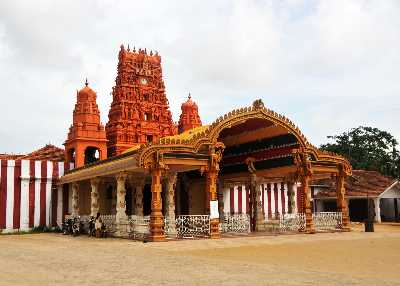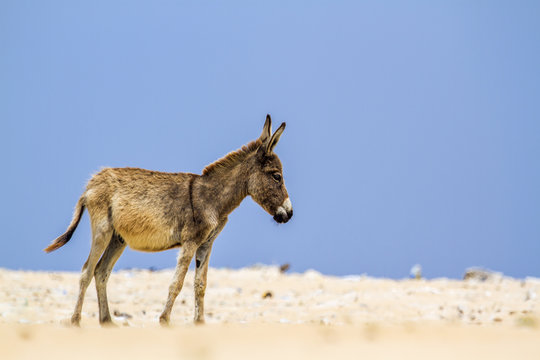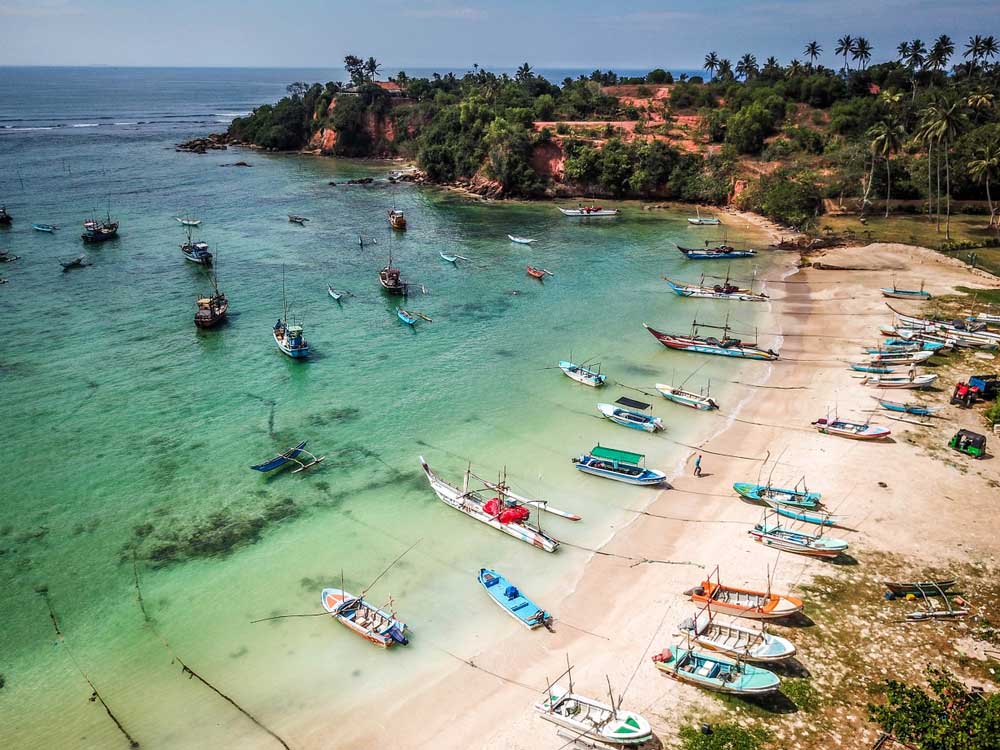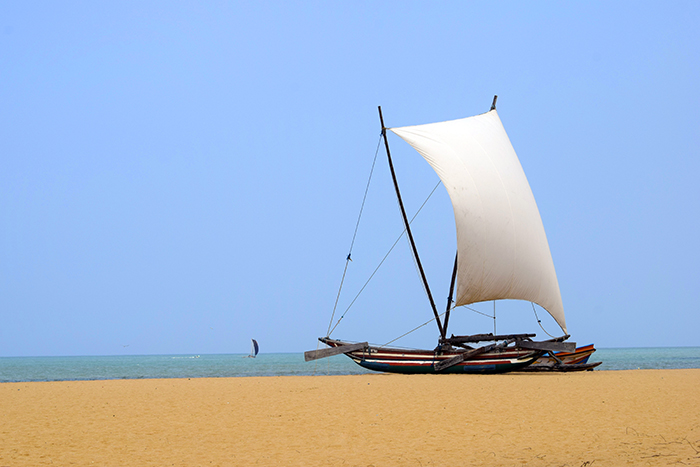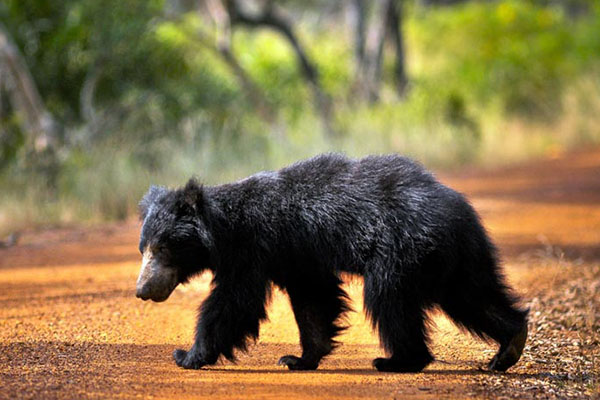The Flavours of Sri Lanka Sri Lankan cooking take delicious advantage of the wide variety of native fruit and vegetables, as well as the many spices that grow on the island. Coconut and coconut milk are also major ingredients and are used in sweets, curries, and relishes. Rice is a staple, with its flour forming the basis of many popular dishes such as dosas, which are pancakes often filled with spiced potatoes. Chicken, beef, and pork are the main meats, although goat and mutton are also used. Fresh and dried seafood is, of course, plentiful.
Rice and Curry
The dish of "rice and curry in Sri Lanka is rarely, if ever as simple as its name might suggest. On the contrary, can be, and frequently is, a veritable banquet comprising a large platter of rice surrounded by a number of smaller dishes made from vegetables, meat, or fish and accompanied by chutneys, a sambol (relish), and poppadoms.
The national dish, Sri Lankan rice, and curry is a complex, intricately spiced array of individual vegetable (and often meat and fish) dishes, served with rice. Chutneys and sambol (a condiment made from ingredients pounded with chili) add heat and additional flavor. Pappadoms are usually present too. Virtually all Sri Lankan curries are based on coconut milk and a blend of spices: chili, turmeric, cinnamon, cardamom, coriander, rampe (pandanus leaves), curry leaves, mustard, and tamarind. Dried fish is also frequently used to season dishes. As you're traveling around the country, you're likely to pull over at many a local restaurant for a rice and curry feed. Some of the best places are simple family-owned roadside restaurants with a selection of around five to 10 individual dishes (mainly vegetarian but there's usually a meat or fish option too). Many restaurants only serve rice and curry at lunchtime. Guesthouses will often prepare it for dinner but you'll need to order it early in the day and leave the cooks to work their magic. At lunchtime in local eateries and at some tourist restaurants there will often be a rice and curry buffet, sometimes served in clay pots. The smaller rice and curry dishes showcase the island's spices, and will usually comprise such items as fish curry, dhal, curried okra, or chili potatoes. Pumpkin curry is also frequently served, as is aubergine, but visitors may also come across such treats as curried mango or jackfruit. A popular relish is pol sambol, made from grated coconut, chili, and salty shredded Maldive fish (cured and dried tuna), which has quite a kick to it. Seeni sambol is gentler and uses onion and tamarind for a sweet-sour taste. The rice used is predominantly of the boiled white variety, but red rice is also served in some places.
No Sri Lankan curry is considered
complete without fenugreek seeds, which add a slight note of bitterness to the dish. Sri Lanka also has its own version of curry powder, which can include coriander, cumin, fennel seeds, fenugreek, and cardamom.
Breakfast
String hoppers are messy balls of steamed rice noodles often eaten for breakfast in Sri Lanka along with a thin dhal or curry. Rice-flour pancake hoppers may also be served. Another popular breakfast dish is pittu - rice flour steamed in a cylinder with layers of grated coconut and served with coconut milk. Kola kanda is a herbal porridge made with rice and coconut. In hotels, breakfast is often a buffet at which visitors can sample a range of Sri Lankan specialties, although normally tailored to the tourist palate. At guesthouses, it is more usual to be served fried eggs and toast plus a fruit plate, unless a Sri Lankan breakfast has been requested in advance.
Regional Dishes and Specialities
Regional variations in Sri Lankan cuisine mainly reflect the availability of particular products, the location, and religious customs. However, the influence of Arab traders, the Dutch, the Portuguese, and the Malays can also be seen in the use of certain ingredients and names. Sri Lankan dishes are quite distinct from those of neighboring India, but Indian food is widely served on the island and there are numerous good south Indian restaurants.
Lamprais
is a Burgher delicacy of rice, dry curries, and frikkadels (Dutch meatballs) wrapped in a banana leaf and baked slowly.
Ambul Thiyal
a dry and sour fish curry is flavored with many spices, but the key one is goraka (dried segments of a bitter fruit).
Kottu
A stir-fried combo of chopped roti bread, veggies, and spices. You can have it made as per Your choice. There is a multitude of choices that You can go for ex : Chicken/Beef/Egg/Mutton kottu. You can even add extra cheese and spices to fit Your tastebuds, finely chopped and sizzled, along with meat, vegetables, and spices, on a hotplate.
Biryani
a popular dish of rice cooked in stock, with meat and a boiled egg, is spicier than its Indian counterpart. Rice and curry is served mainly at lunchtime; in the evenings, local eateries are more likely to feature hoppers and roti on the menu. The latter, a rice-flour flatbread, is folded into a small parcel around a spicy filling.
Paratha
A filling flatbread that's pan-fried on a hot plate.
Dosas (thosai)
Paper-thin pancakes are made from rice batter and usually served stuffed with spiced vegetables.
Pittu
Steamed in bamboo, these cylindrical cakes are made from flour and coconut.
Hoppers
are bowl-shaped pancakes eaten at breakfast or dinner. Fillings may include eggs, yogurt, or honey.
Desserts
Sri Lankan desserts are very sweet. Jaggery-boiled and set palm syrup (kitul) - is the main sweetener. Buffalo-milk yogurt is usually served in clay pots with a jug of palm honey or kitul to be poured over. Stalls selling it can be seen at the side of the road. Jaffna is famous for its cream houses, where the ice cream is almost fluorescent in color. Kiribath, a national dish served on special occasions, is rice boiled in milk to form a sticky cake, eaten with jaggery.
Curd
Slightly sour cream that tastes like natural yogurt; it's served drizzled with kitul treacle made from raw palm sugar.
Pani pol
A small pancake made with a sweet topping of cinnamon and cardamom-infused jaggery.
Bolo fiado
A layered cake is said to have been first introduced by the Portuguese.
Wattalappam
is a dessert similar to crème caramel, but made from coconut milk and sweetened with palm syrup.
Short Eats
"Short eats" are snacks served in local eateries and from street stalls all over the island. They range from deep-fried lentil vadai (fritters) to meat patties, Chinese spring rolls, and rotis. They are usually served on one large plate and diners are then charged for whatever they eat. Visitors should be aware, however, that any snacks not eaten will be served again later, and so it is possible that many hands may have been in contact with the food by the time it reaches the table. The best and safest way to try short eats -and they can be very delicious - is to drop by very early in the morning or just after lunch, when a visit can be timed to coincide with a steaming hot batch fresh from the oven or fryer.





